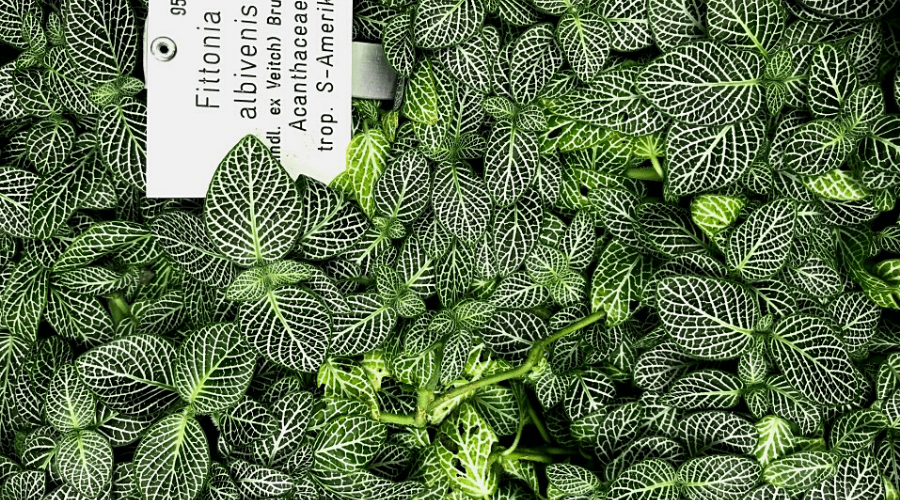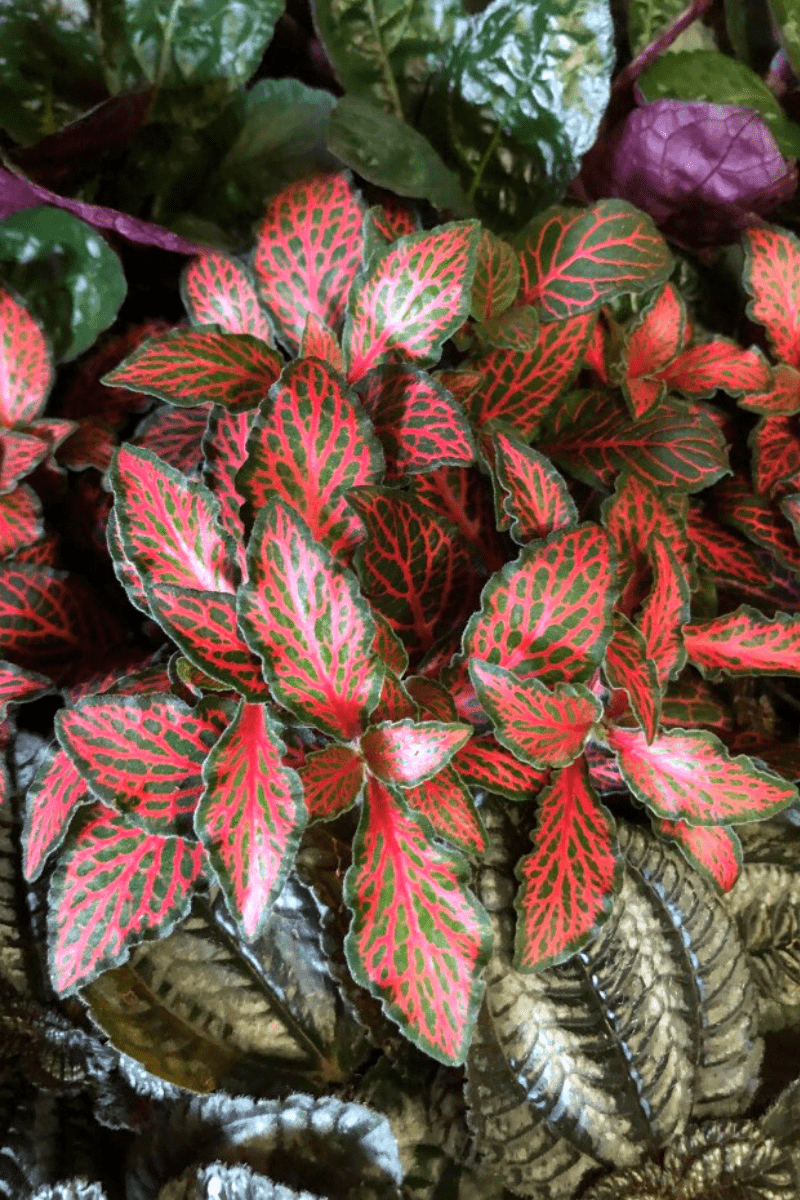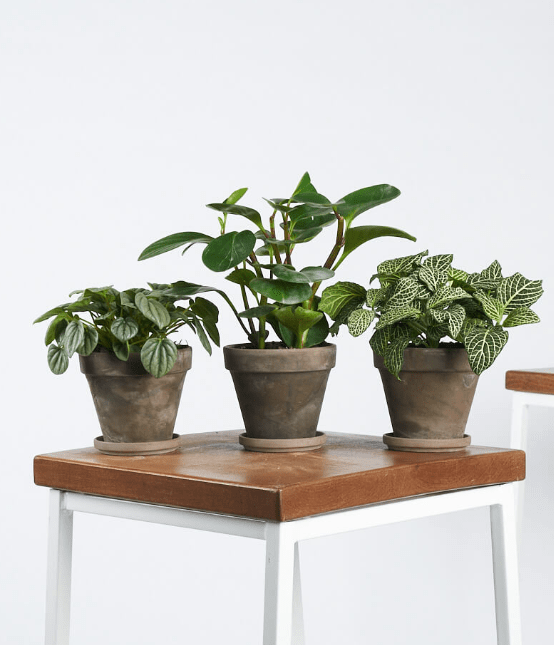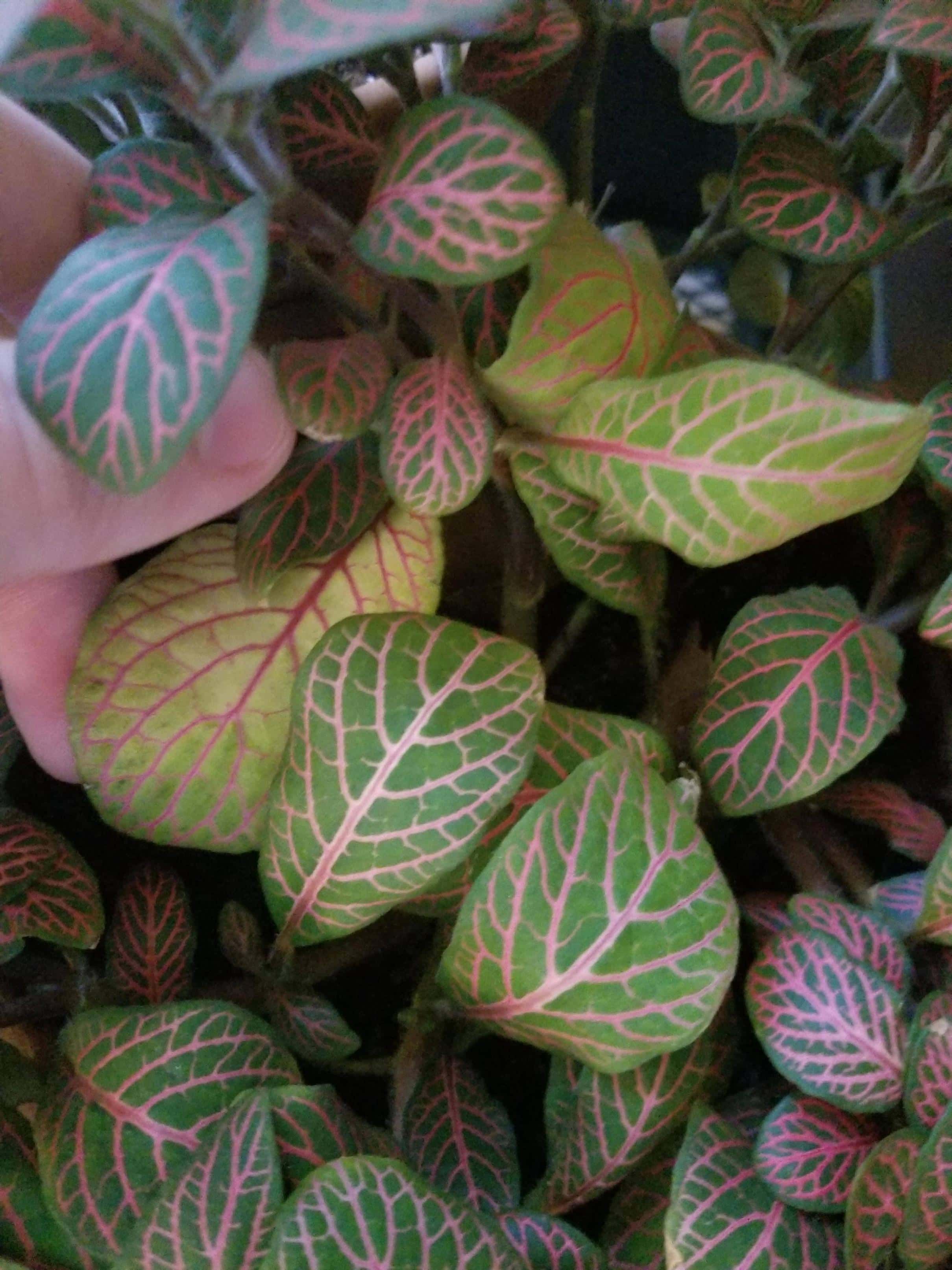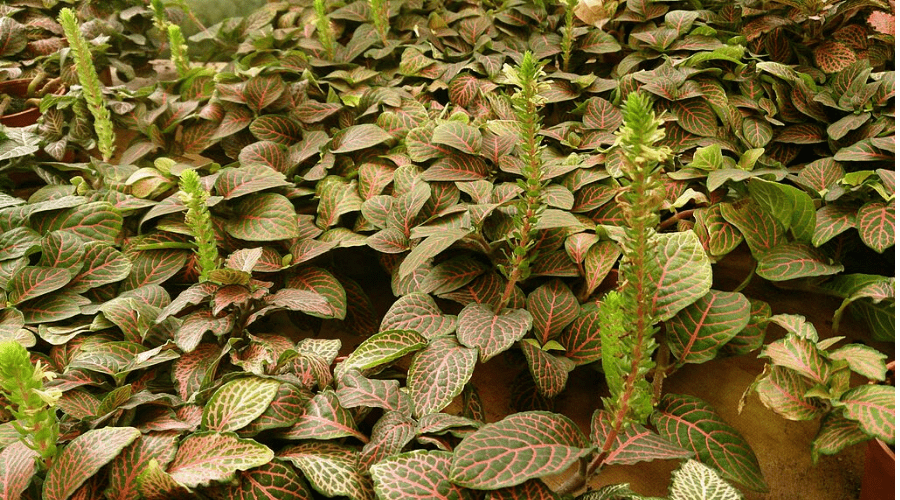Tired of plants that get on your nerves with their endless care needs? Try growing a nerve plant! Nerve plants, properly known as Fittonia, are gorgeous house plants that are famous for their brightly colored veins. They look amazing, have incredible health benefits, and are relatively easy to care for—as long as you keep a few growing tips in mind.
Covering where to get a nerve plant, how to plant a nerve plant, how to care for a nerve plant, and everything in between, this complete guide includes instructions, pro tips, and nerve plant fun facts that will ensure your growing success.
Nerve Plant Details
Fittonia spp.
AKA: Fittonia, mosaic plant, nerve plant, painted net plant
Light: Filtered light, medium to bright. Avoid direct sun.
Water: Keep moist but ensure adequate drainage
Temperature range: 65-80 °F
Height: 4-6 inches high, spreads 12-18 inches
Fertilizer: Half-strength 5-5-5 every week in spring and summer
Special care: Leaves yellow with overwatering. Susceptible to mealy bugs and aphids.
What You Will Need
- Nerve Plant
- Water
- Potting Soil
- Peat Moss
- Common Gardening Tools
- Pot
- Fertilizer (optional)
Nerve Plant Varieties
Nerve plants are known for their colorful veins which can be anything from silvery-white to bright pink. Below are different nerve plant varieties with different vein colors.
Black Star
Black Star nerve plants have dark green leaves with deep red veins.
Purple Vein
Purple vein nerve plants have lavender-colored veins and large, dark green leaves.
Pink Angel
Pink Angel is a compact nerve plant with small, hot pink leaves.
Frankie
Frankie nerve plants have light pink leaves and dark green edges.
White Anne
White Anne nerve plants have white veins that pop out from their dark green leaves.
Juanita
Juanita nerve plants have large leaves and bright red veins.
Where to Buy Nerve Plants
You can buy nerve plants from your local nursery or online. If you are looking to buy online, try the Pink Nerve Plant or Silver Nerve Plant from JM Bamboo. They come in their own 2.5” pot and are shipped with the utmost care so that they arrive safely at your door. Just keep in mind, the plants will quickly outgrow the pots they are shipped in.
Fur Friendly Collection from Bloomscape
Humidity loving and non-toxic, these plants are perfect additions to any home with pets. Each variety has distinct coloring, variegation, or uniquely shaped leaves. Your Fittonia White, Peperomia, and Peperomia Frost plants will thrive in medium indirect light, prefer to be kept moist, and will benefit from regular misting.
How to Propagate Nerve Plants
You can also easily propagate a nerve plant if you know someone else with one or want to grow a new one from your own plant. Simply, take leaf-tip cuttings with at least 2 growing nodes when you repot the plant in the spring. Pot the cuttings in a peat-based soil mix and keep them watered and moist. In as little as 2-3 weeks they should sprout roots. You can use a rooting hormone if you live in a particularly dry or cool climate but otherwise, you shouldn’t have to use one.
Common Nerve Plant Growth Problems
Although nerve plants are relatively easy to grow, they do have some specific care requirements, like a warm environment, frequent mistings, and indirect sunlight. Below are some of the problems you could encounter when growing a nerve plant.
Yellow Leaves
If your nerve plant starts to get yellow or droopy leaves that means you are watering it too much. If the issue persists, the leaves could begin to fall off and your plant could suffer from root rot. To fix the problem, make sure that your pot has adequate drainage holes and that you are not overwatering the plant. Check the soil before watering by digging your finger into the soil. If the soil is soggy, don’t water it.
Droopy Stem
Nerve plants can “faint” if they do not get enough water.
Don’t worry if your plant faints, no matter how dramatic the drop may be. My own nerve plant fully collapsed after I took a long weekend away from it without enlisting a plant babysitter but within two days of regular watering, it completely regained its strength and former glory.
Leaf Drop
Plants drop their leaves in the winter to conserve energy. Because of this, cold temperatures and lack of sunlight tend to be the cause of leaf drop. To fix the problem, keep your plant warm and in a humid space with access to the sun. Move it closer to the window or readjust its positioning completely for a more ideal spot.
Dry, Burned Leaves
If your nerve plant’s leaves start to shrivel that is a sign that it is either not receiving enough humidity or is receiving too much sun. To boost humidity, add a humidifier to the room that your plant is in and mist it more regularly with a spray bottle. A nerve plant with too much sun exposure will have brown, dried out leaves. To deal with this, move your plant away from the light or to a space with indirect sunlight.
Nerve Plant Benefits
Nerve plants can cleanse the air, removing harmful toxins that inhibit your breathing. Cleaner air means a healthier body and better sleep. Better sleep means a clearer mind and less stress.
Not only will you feel less stressed, you will have an overall boost in your mental health. Just having a houseplant can do wonders for your mental health. They can help you feel accomplished when you successfully take care of them and they can brighten up a room. Nerve plants will beautify your home, adding a touch of gorgeous greenery to interior spaces, making them happier and cheerier.
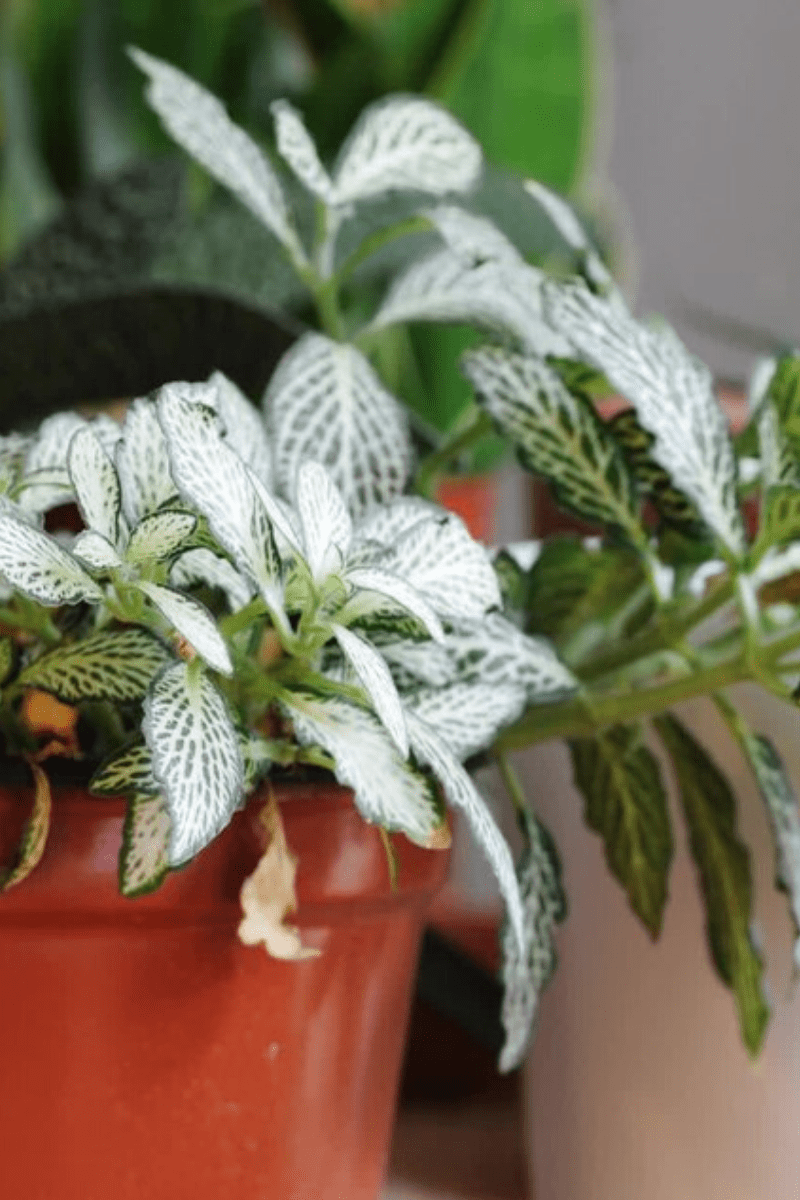 How to Grow a Nerve Plant Inside
How to Grow a Nerve Plant Inside
Step One: Prepare for Your Plant
Place your nerve plant in a spot with indirect, filtered sunlight in a north- or east-facing window. Nerve plants love humid spaces with temperatures around 70 F, that can dip as low as 60 F or as high as 80 F.
They need pots with drainage holes to avoid overwatering and do especially well in terrariums and covered gardens. Their soil should be moist and well-drained with a pH of 6.5. Consider using potting soil and a peat moss base.
Pro Tip: Nerve plants can also thrive under fluorescent lighting.
Step Two: Water Your Nerve Plant
Nerve plants thrive in humid weather, so naturally, they appreciate a good misting every now and then. You should water your nerve plant regularly, whenever the soil dries out, but be careful not to water to the point that the soil becomes too soggy or has standing water.
Pro Tip: To provide your nerve plant with continual moisture consider growing it in a tray with pebbles and water.
Step Three: Care for Your Plant
Feed plants weekly with a balanced liquid fertilizer like 5-5-5 diluted to half strength. Annually, repot your plant in the spring using fresh potting soil. You should also annually prune your nerve plant to enable healthy, productive growth. Cut off the flowers that may bloom on your nerve plant and trim back the stalks.
Your plant will grow back quickly because the growth rate of nerve plants is fairly stable. They normally grow to be 3-6 inches tall.
Alternative Method: Growing Nerve Plants Outdoors
Most people grow nerve plants as house plants, however, if you live in USDA Grow Zone 11 you can plant them outdoors. They should be planted in a spot that does not receive full sunlight, under some coverage that keeps the light indirect. They thrive in temperatures around 70 F while their growth can stall in colder weather. Outdoors, they tend to grow to be 3-6 inches tall with a trailing spread of 12 to 18 inches.
If your nerve plant becomes too leggy you can pinch off the plant’s tips and prune the flower buds to keep its foliage full and bushy.
Conclusion
Now that you have hit this vein of information, you will have no trouble growing your own gorgeous nerve plant at home!
I hope you enjoyed this tutorial! If you did, be sure to share it and comment below with any questions you have about growing and caring for nerve plants.

